Creative Edible Flower Dishes are more than just food; they are edible works of art that tantalize the senses and awaken a new appreciation for the beauty found in nature’s bounty. With a careful selection of blossoms, these dishes infuse vibrant colors and delicate flavors, turning each bite into a culinary masterpiece. From elegant garnishes to bold flavor enhancements, Creative Edible Flower Dishes offer a feast for both the eyes and the taste buds, inviting us to explore the boundless creativity that can be achieved in the kitchen.
The culinary world has always been an arena for innovation and experimentation. Chefs and home cooks alike continually seek new ways to tantalize our taste buds and elevate dining experiences to new heights. One of the most enchanting trends in recent years has been the integration of edible flowers into various dishes. These delicate and visually stunning blossoms not only add a splash of vibrant colors but also introduce unique flavors, textures, and aromas that can turn a simple meal into a memorable gastronomic adventure. Elevate Your Culinary Adventure with Exquisite Creative Edible Flower Dishes.
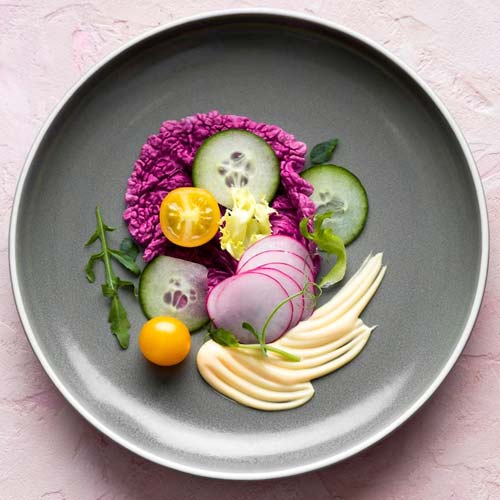
In this article, we will explore the captivating world of edible flowers, their rich history, their significance in various cultures, and the growing trend of incorporating them into creative dishes. Additionally, we will delve into some intriguing recipes that showcase the versatility and beauty of edible flowers. Prepare to embark on a journey through a kaleidoscope of flavors and aromas, and discover how these beautiful blooms can transform your dining experience. Experience the Delicate Beauty of Creative Edible Flower Dishes that Dance on Your Palate.
A Blossoming History
Edible flowers have a rich history that dates back centuries. Ancient civilizations, such as the Greeks, Romans, and Chinese, were known to use flowers in their culinary practices for both medicinal and culinary purposes. The ancient Greeks, for instance, were known to incorporate rose petals and violet blossoms into their meals, while the Chinese used chrysanthemums and lotus flowers in various dishes.
Throughout history, edible flowers have been celebrated for their therapeutic properties as well. Herbalists and traditional medicine practitioners have utilized flowers in remedies for ailments ranging from digestive issues to skin disorders. These historical uses of edible flowers reflect not only their culinary significance but also their cultural and medicinal importance. Savor the Artistry of Gastronomy Through Thoughtfully Crafted Creative Edible Flower Dishes.
The Art of Using Edible Flowers

Incorporating edible flowers into dishes requires an artistic touch. It is essential to understand which flowers are safe for consumption and how to prepare and present them in a way that complements the overall dish. While some flowers are commonly used and widely recognized as safe, others may require more caution due to potential allergies or toxicity. Discover a World Where Flavor and Aesthetics Unite in Creative Edible Flower Dishes. You can read Mastering the Authentic Shirazi Salad Recipe for 3 people.
The first rule of using edible flowers is to ensure that they are indeed edible and free from harmful chemicals. It is best to source edible flowers from reputable suppliers who specialize in culinary-grade blooms. Additionally, always thoroughly wash the flowers before use to remove any dirt, insects, or pesticide residue. Embark on a Flavorful Journey with Innovative and Delectable Creative Edible Flower Dishes.
When it comes to cooking with edible flowers, creativity knows no bounds. They can be used in various forms, including fresh, dried, candied, or infused into oils, vinegars, and syrups. The colors and flavors of edible flowers can enhance both sweet and savory dishes, making them versatile additions to almost any culinary creation. Indulge in Nature’s Artistry with Handcrafted Creative Edible Flower Dishes.
Common Edible Flowers and Their Flavor Profiles

Culinary Innovation Blossoms in Exquisite Creative Edible Flower Dishes. Before diving into the realm of creative edible flower dishes, let’s explore some commonly used edible flowers and the unique flavors they bring to the table:
- Roses: Rose petals have a delicate floral taste with subtle hints of fruitiness. They are perfect for desserts like rose-flavored macarons or infused in beverages like rose water lemonade.
- Lavender: Known for its soothing aroma, lavender imparts a sweet and slightly citrusy flavor to dishes. It pairs well with desserts, such as lavender-infused ice cream or honey-lavender cookies.
- Nasturtiums: With a peppery and slightly tangy flavor, nasturtiums add a lively kick to salads, wraps, and pasta dishes.
- Violets: These charming blossoms have a subtly sweet flavor, making them ideal for decorating cakes and pastries.
- Calendula: Also known as marigold, calendula offers a mild saffron-like taste and can be used to brighten up rice dishes, soups, and stews.
- Pansies: Pansies have a slightly grassy and minty flavor, making them suitable for garnishing cocktails and salads.
- Chrysanthemums: These flowers boast a slightly bitter taste and are often used to infuse teas or as a seasoning in stir-fries.
A Symphony of Taste and Beauty: Unveiling Creative Edible Flower Dishes. Understanding the flavor profiles of these flowers allows chefs and home cooks to create harmonious flavor combinations in their culinary masterpieces.
Creative Edible Flower Dishes
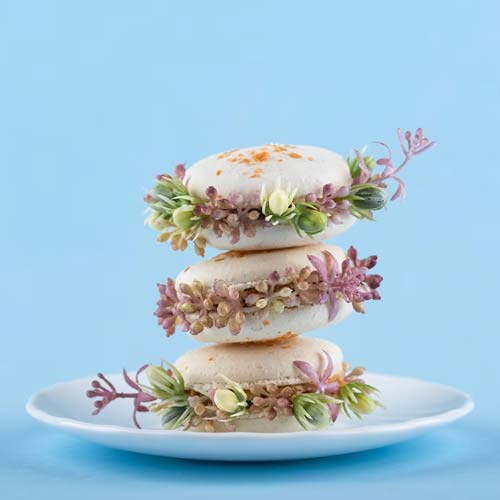
Delight in Culinary Elegance: Experience Creative Edible Flower Dishes. Now that we have explored the world of edible flowers and their flavors, it’s time to embark on a culinary adventure and discover some creative dishes that showcase the beauty and taste of these blooms:
- Edible Flower Salad with Citrus Dressing
Ingredients:
- Mixed salad greens (arugula, spinach, and mesclun)
- Edible flowers (nasturtiums, pansies, and violets)
- Orange segments
- Grapefruit segments
- Lemon or lime zest
- Olive oil
- Freshly squeezed orange juice
- Honey
- Salt and pepper to taste
Instructions:
- Arrange the salad greens on a serving platter.
- Garnish the greens with the edible flowers, making sure to spread them evenly for a colorful display.
- Scatter the citrus segments over the salad.
- In a small bowl, whisk together the olive oil, orange juice, honey, and a pinch of salt and pepper to make the dressing.
- Drizzle the dressing over the salad just before serving.
- Grate lemon or lime zest over the top for an extra burst of citrus flavor.
- Enjoy the delightful combination of fresh greens, tangy citrus, and vibrant edible flowers in this refreshing salad.
- Lavender and Honey-Glazed Salmon
Ingredients:
- Salmon fillets
- Culinary lavender buds
- Honey
- Lemon juice
- Olive oil
- Salt and pepper
Instructions:
- Preheat the oven to 375°F (190°C) and line a baking sheet with parchment paper.
- In a small bowl, mix together honey, lemon juice, olive oil, salt, and pepper to make the glaze.
- Brush the glaze over the salmon fillets, coating them evenly.
- Sprinkle culinary lavender buds on top of the glazed salmon.
- Bake the salmon in the preheated oven for about 15-20 minutes or until cooked to your desired level of doneness.
- Serve the lavender and honey-glazed salmon with a side of roasted vegetables or a fresh salad for a delightful main course that marries floral and savory flavors.
- Rose Petal and Raspberry Eton Mess
Ingredients:
- Fresh raspberries
- Whipped cream
- Crushed meringue cookies
- Rose petals
- Rose water
Instructions:
- In a mixing bowl, gently fold together the whipped cream, fresh raspberries, and crushed meringue cookies.
- Add a few drops of rose water to the mixture to infuse it with the delicate essence of roses.
- Carefully stir in some edible rose petals, reserving a few for garnishing.
- Spoon the Rose Petal and Raspberry Eton Mess into individual serving glasses or bowls.
- Top each serving with a few extra rose petals for a visually striking and delectable dessert that celebrates the beauty and flavor of roses.
The Art of Plating with Edible Flowers
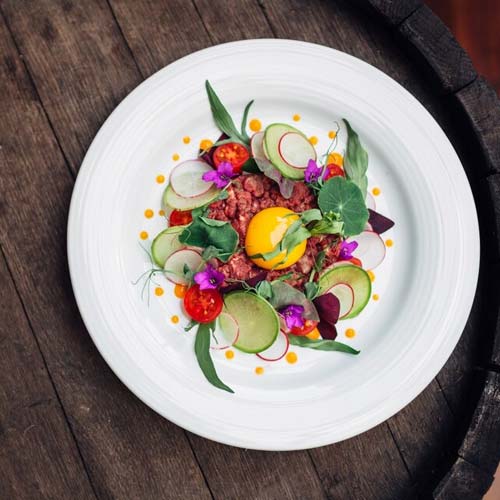
Culinary Masterpieces Await: Explore the Allure of Creative Edible Flower Dishes. In addition to the taste and aroma they bring to dishes, edible flowers are also visually captivating. Plating with edible flowers allows chefs to create stunning presentations that can leave a lasting impression on diners. The art of plating with edible flowers involves understanding color contrasts, balance, and overall aesthetics to create an exquisite masterpiece on the plate. Read Easy Mediterranean Flatbreads.
For example, a simple dish like a creamy risotto can be transformed into a work of art with the strategic placement of edible flowers on top. Delicate violas or pansies can add splashes of purple and yellow, while a sprinkling of tiny, colorful calendula petals can elevate the visual appeal.
The Importance of Sustainability and Safety
As the popularity of edible flowers continues to rise, it is crucial to address the importance of sustainability and safety in their usage. When harvesting or purchasing edible flowers, it is vital to ensure that they come from a reliable source, free from harmful pesticides and chemicals. Celebrate Freshness and Elegance with Creative Edible Flower Dishes.
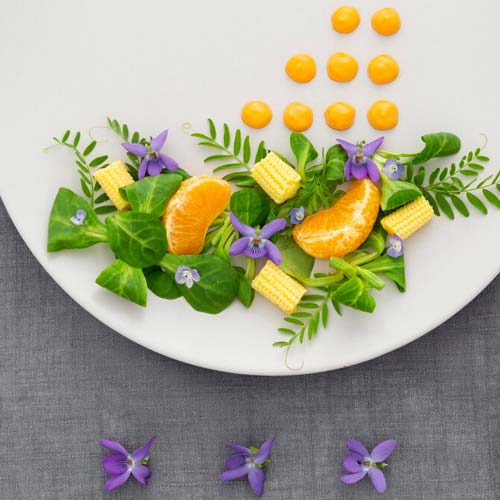
Furthermore, it is essential to avoid foraging for wild edible flowers unless you have extensive knowledge and expertise in identifying safe varieties. Foraging without adequate knowledge can lead to accidental ingestion of toxic plants, causing severe health complications. Inventive Flavors Bloom in Artful Creative Edible Flower Dishes.
A Fusion of Taste and Elegance: Discover Creative Edible Flower Dishes. In the culinary industry, promoting sustainable practices can involve cultivating edible flowers in controlled environments, such as gardens or greenhouses. By doing so, chefs and home cooks can ensure a steady supply of safe and high-quality blooms while preserving natural ecosystems and biodiversity. Awaken Your Senses to the Enchanting World of Creative Edible Flower Dishes. You can read 1 month diet plan to lose weight.
Conclusion
Creative edible flower dishes offer an exciting fusion of art and gastronomy. From salads and main courses to desserts and beverages, the possibilities for incorporating edible flowers into culinary creations are endless. As we explored in this article, these beautiful blooms have a rich history, a wide array of flavors, and cultural significance that spans centuries. Gourmet Artistry Takes Shape in Captivating Creative Edible Flower Dishes.
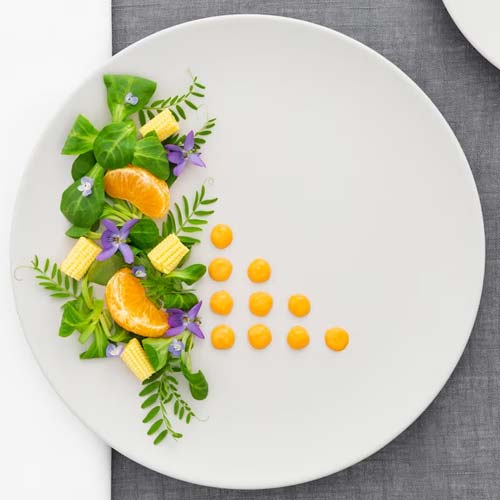
When venturing into the world of edible flowers, it is essential to prioritize sustainability and safety. By sourcing culinary-grade flowers and avoiding the use of harmful chemicals, we can preserve these delicate blooms for generations to come. Taste the Essence of Nature’s Palette in Creative Edible Flower Dishes. Elevate Your Plate with Vibrant and Flavorful Creative Edible Flower Dishes.
Embrace the art of cooking with edible flowers, and let your creativity bloom in the kitchen. By integrating these vibrant and flavorful blossoms into your dishes, you can elevate your culinary experience and enchant your guests with a feast for both the eyes and taste buds. Remember, in the world of edible flowers, every dish becomes a masterpiece and every meal an unforgettable experience.
FAQs for Creative Edible Flower Dishes
- What are creative edible flower dishes? Creative edible flower dishes are culinary creations that incorporate flowers as both a decorative and flavorful element, adding a unique and artistic touch to the presentation and taste of the dish.
- Are all flowers edible? No, not all flowers are edible. It’s important to use flowers that are specifically grown for culinary purposes and are free from pesticides. Always ensure that you are using safe and edible flowers.
- What types of dishes can include edible flowers? Edible flowers can be used in a variety of dishes, including salads, desserts, beverages, main courses, and even cocktails, to enhance visual appeal and introduce delicate flavors.
- Do edible flowers have a distinct taste? Yes, edible flowers can have a range of flavors from mild and slightly sweet to more robust and peppery. Their taste can vary depending on the type of flower used.
- Are creative edible flower dishes suitable for all occasions? Absolutely! Creative edible flower dishes can be a stunning addition to everything from everyday meals to special occasions like weddings, parties, and celebratory gatherings.
- How do I know which flowers are safe to eat? It’s important to research and identify edible flowers before using them in your dishes. Reliable sources or experts can guide you in selecting safe and suitable options.
- Can I grow my own edible flowers? Yes, many edible flowers can be grown in your garden or even indoors in pots. Just make sure to use organic growing practices and avoid any harmful chemicals.
- Do edible flowers offer any nutritional benefits? Some edible flowers contain nutrients and antioxidants, but their consumption is primarily for aesthetic and flavor-enhancing purposes rather than significant nutritional value.
- How do I properly clean and store edible flowers? Gently wash flowers under cold running water and let them air dry on a paper towel. Store them in a cool, dry place and use them soon after harvesting for the best results.
- Can I use edible flowers in hot dishes? Yes, you can use edible flowers in both hot and cold dishes, but adding them to dishes just before serving can help preserve their colors and delicate flavors.
- Are there any cultural or culinary traditions associated with edible flowers? Yes, many cultures have a history of incorporating edible flowers into traditional dishes for both symbolic and aesthetic reasons.
- Are there any allergy concerns related to edible flowers? Some individuals may have allergies to certain types of flowers, so it’s important to inform guests if edible flowers are included in a dish, especially in social gatherings.
- Can I use edible flowers in baking? Yes, edible flowers can be used in baking, such as decorating cakes, cupcakes, or pastries, to add a visually appealing and fragrant touch.
- Do edible flowers have to be used fresh, or can they be dried? Edible flowers are often used fresh for their vibrant colors and delicate textures. While some flowers can be dried for teas or other culinary uses, their appearance may change.
- Are there any beverages that can be enhanced with edible flowers? Yes, you can infuse beverages like water, tea, lemonade, and cocktails with edible flowers to add a subtle and refreshing twist.
- Can I use edible flowers in savory dishes? Absolutely! Edible flowers can be used to garnish and enhance the flavors of various savory dishes, including salads, soups, and entrées.
- Where can I find edible flowers if I don’t grow them myself? Edible flowers might be available at specialty food stores, farmers’ markets, or through online retailers that specialize in culinary ingredients.
- Are there any creative ways to use edible flowers beyond garnishing? Yes, you can use edible flowers to make floral-infused oils, vinegars, syrups, and even ice cubes, adding a burst of color and flavor to your creations.
- Can I use edible flowers to make natural dyes for food? Yes, some edible flowers can be used to create natural dyes for coloring foods like frosting, dough, or drinks.
- Are there any classic combinations of edible flowers and ingredients that work well together? Certainly, there are classic pairings like lavender with lemon, rose petals with chocolate, and nasturtiums with salads that have been popular for generations due to their harmonious flavors.
Please follow us on linkedin. You can learn all best canadian food recipes you can check our Culinary 1TouchFood Youtube and Telegram 1TouchFood page. Don’t forget Fighting Obesity Magazine and Radio Cooking.

